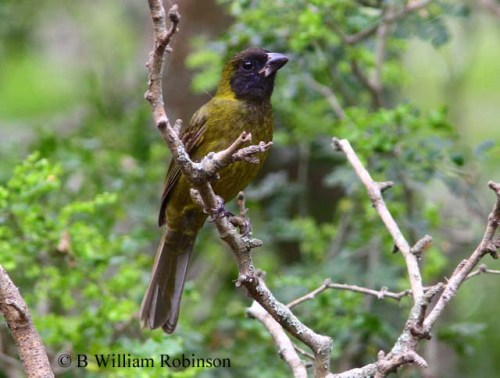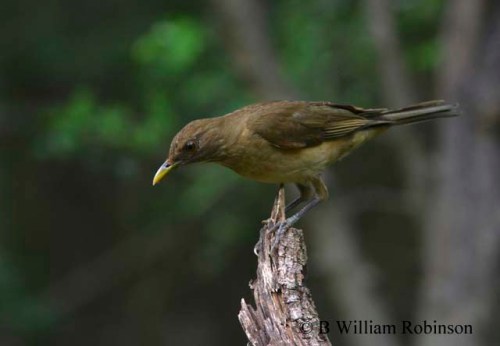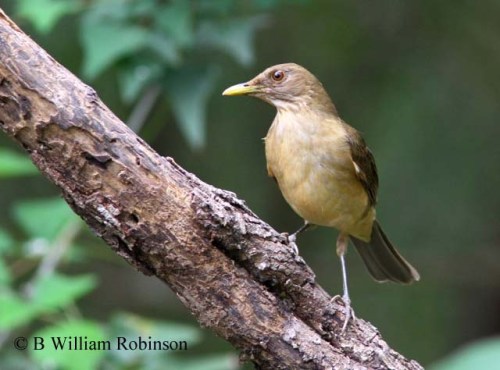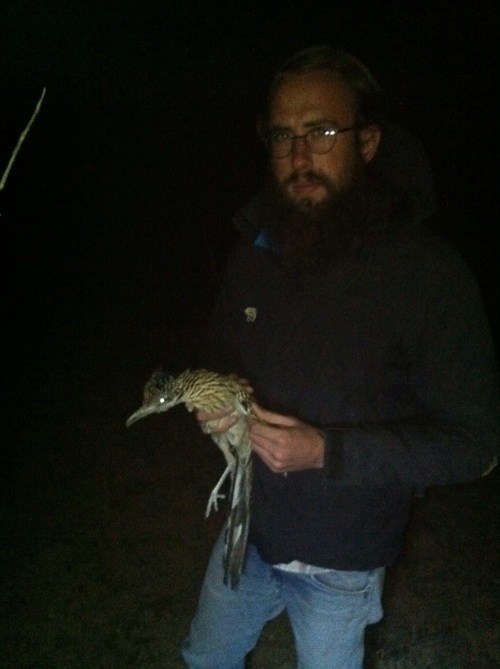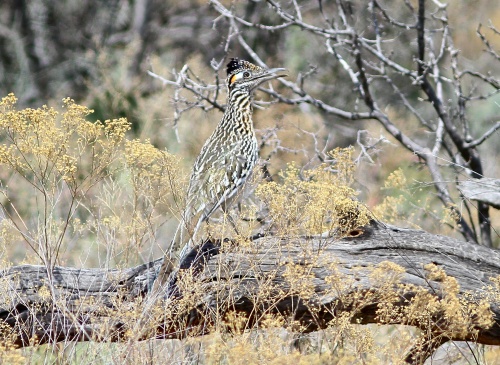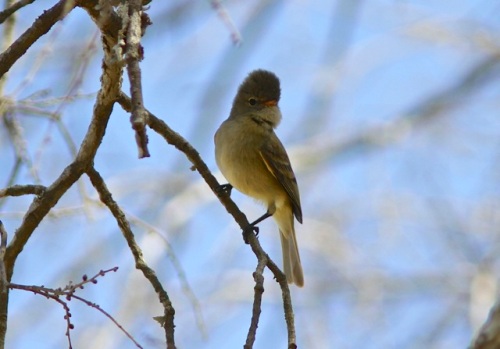
Northern Beardless-Tyrannulet- Camptostoma imberbe
The Rio Grande Valley! This valley is the most incredible location for the beatnik birder. The area is a treasure trove of new birds, new scenery, new habitats, and specialties that have been on my mind for some time. The first spot I birded, Anzalduas County Park, sat along the Rio Grande some forty miles inland. It proved an incredible introduction to the area. I’d like to highlight three flycatchers that inhabit this park.
Caitlin Davis and I began early at the park. We were tasked with taking some video clips of Hook-billed Kite. We spent the morning on the dike watching the forested areas of the river for surfacing Kite. We never saw the bird. Around mid-day we abandoned our kite search to bird the park. The Northern Beardless-Tyrannulet was one of the first birds we saw.
I cannot describe how adorable this bird is. We watched a pair foraging in the trees for a few minutes, as they called to each other in the most delicate of bird voices. The poses of the birds, and their raised crest, reminded me of small soldiers. The birds are characters, and characters are what I celebrate. I’ve stored these birds away in my book of favorites.
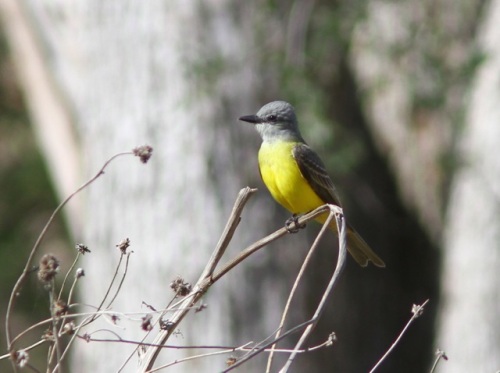
Couch’s Kingbird- Tyrannus couchii
The Couch’s Kingbird is prolific in the park. You hear and see them everywhere. I was aware of the increasing presences of Tropical Kingbird in south Texas, so I kept a keen ear out for any unusual calls. The two are virtually indistinguishable by sight, and can only be reliably separated when a vocalization is heard. It is this instance that I can study the song, and then learn to distinguish the two. I love these challenges. No Tropical’s were in the park, to my knowledge, but I was able to get to know the calls of the Couch’s.

Great Kiskadee- Pitangus sulphuratus
The Great Kiskadee is a bird I have wanted to see for long. They are characters for certain. The birds are highly vocal, and their calls are wonderful. The call is why the kiskadee’s has its strange name. It call is loud and full, with multiple syllables, phonetically sounding kiskadee. I really enjoyed the bird on all levels. Visually, it is striking, standing out amidst trees and sky. Its call is distinctive, and can be heard above any other. Its habits are in line with those of other large flycatchers, but something about the bird causes me to watch it a bit longer, and enjoy it a bit more.
I’ve really enjoyed flycatchers lately. I love when your study takes a focused fascination to a particular group. It helps facilitate deep learning. Perhaps my recent focus on flycatchers will continue further into discovering more about their lifestyles and habits.
 As a child, I poured over bird books, spending a substantial amount of time looking at the worlds herons. When looking through North America’s herons, I began developing favorites of the birds I dreamed to see. The Tricolored Heron was very near the top of the list. The bird has an aesthetic seemingly otherworldly. The colors and textures dazzle the eye. I was fascinated by illustrations and photos of this bird as a child.
As a child, I poured over bird books, spending a substantial amount of time looking at the worlds herons. When looking through North America’s herons, I began developing favorites of the birds I dreamed to see. The Tricolored Heron was very near the top of the list. The bird has an aesthetic seemingly otherworldly. The colors and textures dazzle the eye. I was fascinated by illustrations and photos of this bird as a child.
